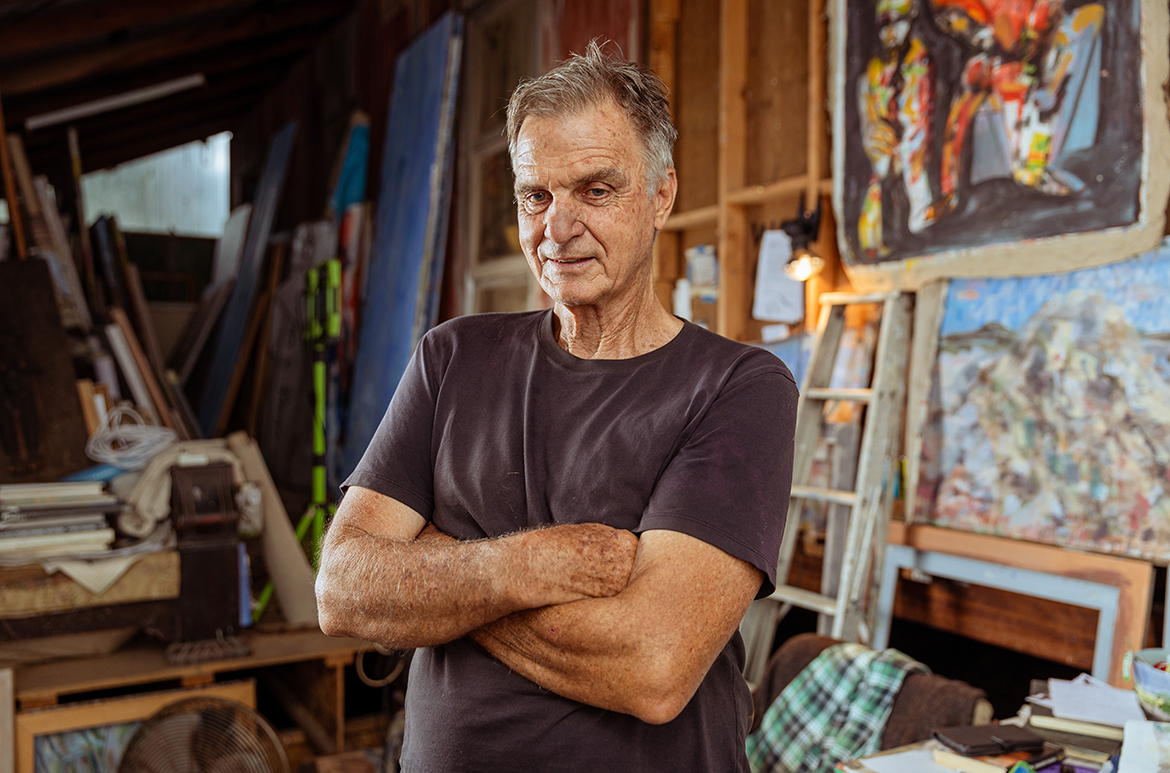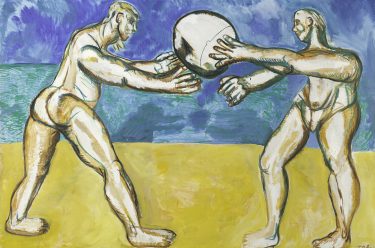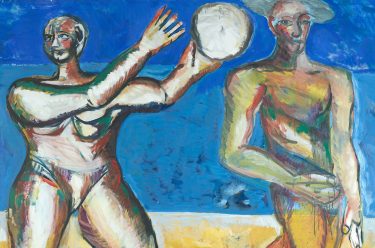At art school in the 1970s, a young Joe Furlonger was ‘happy just to be painting’ — an activity enjoyed
since childhood and a counterpoint to his work on the family’s market garden farm and stints on
fishing trawlers. Now on the cusp of turning 70, the Queensland artist’s urge to paint is undiminished.
A new survey exhibition and an accompanying publication from which the following is drawn, reveal the inspiration and mastery behind his works.
In November 2021, preparing for the exhibition ‘Joe Furlonger: Horizons’ and its accompanying publication, QAGOMA conservators Gillian Osmond and Ruby Awburn spent a morning with the artist in his Samford studio, on Brisbane’s outskirts, during which he was generously forthcoming in discussing his approach to painting. The exchange helped Osmond and Awburn to understand his choices in art materials, as well as the evolution of Furlonger’s practice, which has informed both the Gallery’s current and longer-term approaches to the care and presentation of his paintings, but also provided a glimpse of the artist himself.
Joe Furlonger in his Samford studio


Furlonger’s unassuming studio — built on the same Samford Valley property as his grandmother’s family home — is an open-air lean-to abutting a large tin shed, fabricated from recycled timbers, salvaged window frames and sheets of corrugated iron. Entering the studio up a makeshift ramp, the site is reminiscent of Ian Fairweather’s (1891–1974) self-made ‘hut’ on Bribie Island, where the renowned artist lived and worked as a recluse from 1953 until his death. (Unprompted, Furlonger proffered published photographs of Fairweather’s studio, taken in the 1960s,1 and stated ‘this is the optimum in studio design . . . a really good bit of building . . . You can see what I’m aping in my own’.)
Joe Furlonger; Errol Barnes (potter) ‘Jar (Central Queensland landscape)’
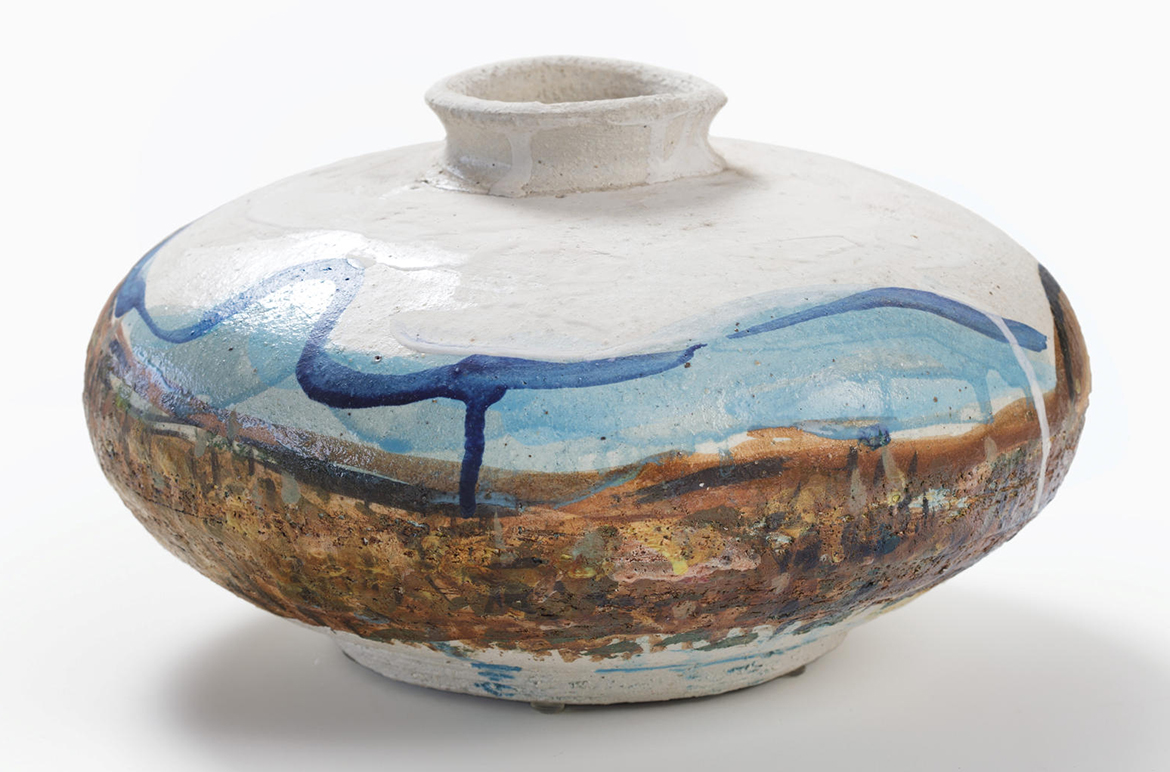
‘Looking around,’ noted Osmond, they saw ‘rolls of canvas haphazardly leaning against stacks of artworks, unstretched paintings in progress pinned to the walls, painted ceramic vessels (collaborations with potter Errol Barnes) (illustrated) holding paintbrushes, and copious piles of art books.’ Small studies painted on paper are scattered on the main table and floor. Open four-litre tins, the insides of which are coated with layers and layers of dried paint, sit next to containers of PVA (polyvinyl acetate) wood glue, dog shampoo, bags of Avista oxide pigment, smaller jars of artist pigment, and casually strewn newspapers. A single industrial fan provides minimal relief from the Queensland humidity. His grandmother’s throne-like chair sits almost in the middle of the room, facing the opening of the studio’s awning. From the chair, the artist’s spot for meditation and conceptual development, you can survey the whole studio.
Joe Furlonger ‘Fisherman’
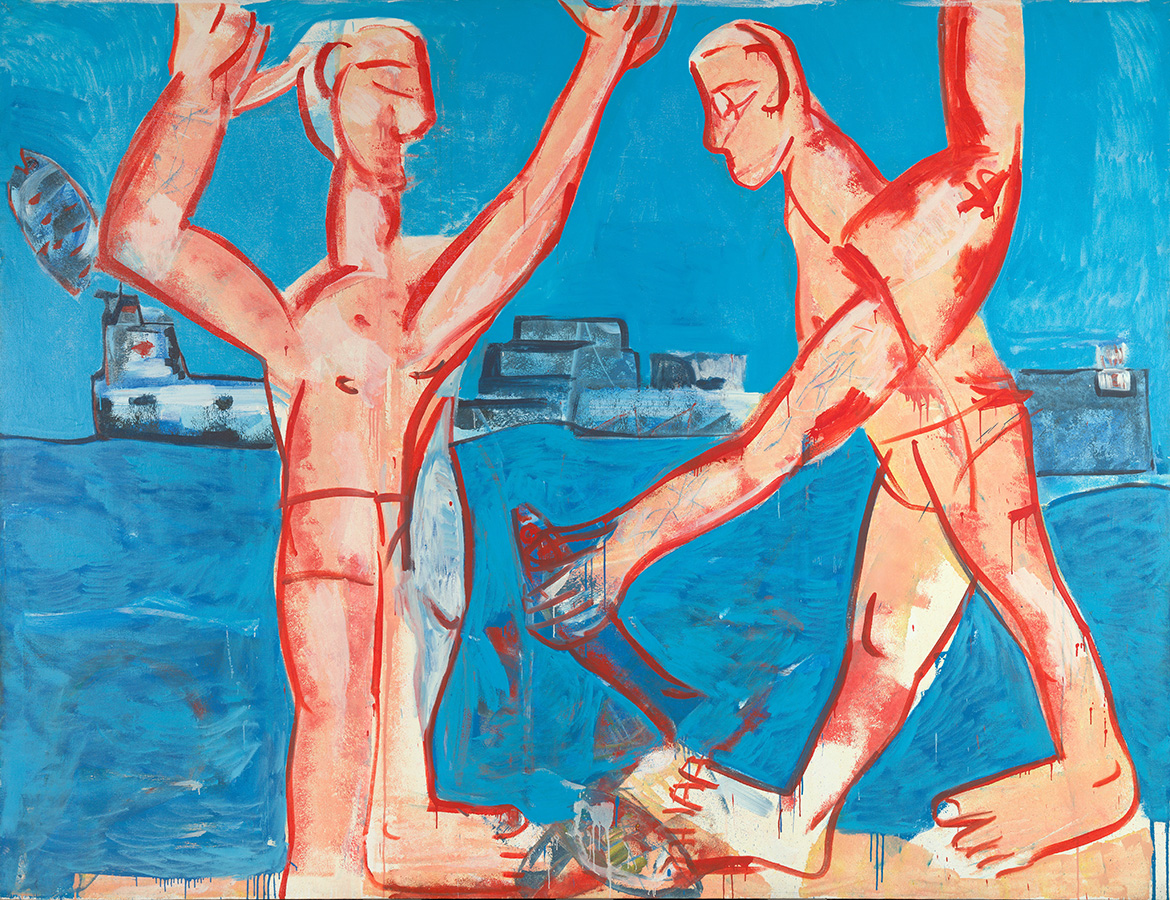
Joe Furlonger ‘Balancing on a ball (from ‘Circus Paris-Berlin suite’)’

Furlonger has mined the narrative of journey for over 40 years, searching for imagery during immersive travels in Papua New Guinea, Vietnam and China, and from extensive road trips in Australia. On one occasion, he told Simon Wright, Furlonger felt like a drive, packed up the family, and ended up crossing the continent from south-east Queensland to Broome in the far north-west, drawing along the way. For allied research, he has gone to the Gold Coast to surf and watch the ocean (and to live); worked on trawlers; visited the circus with sketchpads; and odd-jobbed as a ‘jungle buster’, charged with taming the bush and bramble along semi-rural roads. He has long admired Chinese brush-and-ink painting, with its hint of narrative within the imagery, its wild swings between obsessive detail and fleeting gesture, and the various formal experiments in verticality and aerial perspective. As Wright notes: ‘Australian landscape painting is seasonal,’ he told me. ‘If you’re not an opportunist, you have not got a hope. If you don’t get out and paint it, it’s gone.’
Joe Furlonger ‘Untitled’
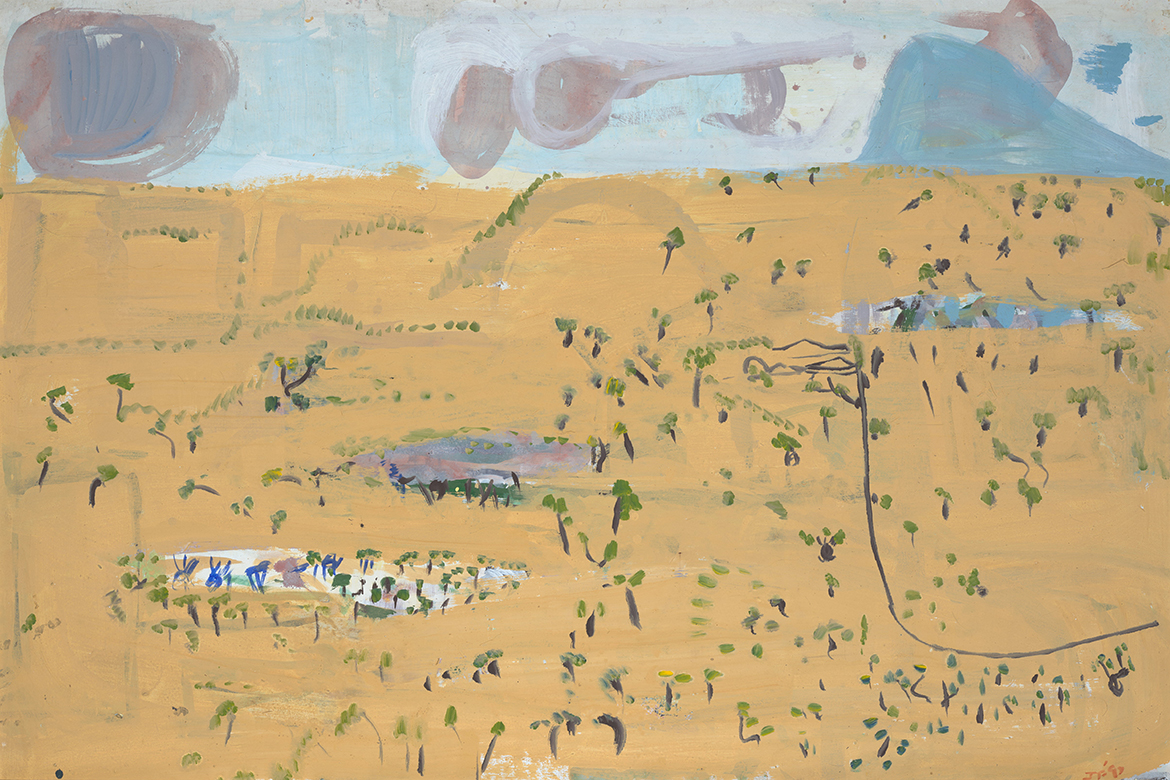
Joe Furlonger ‘Fishermen’
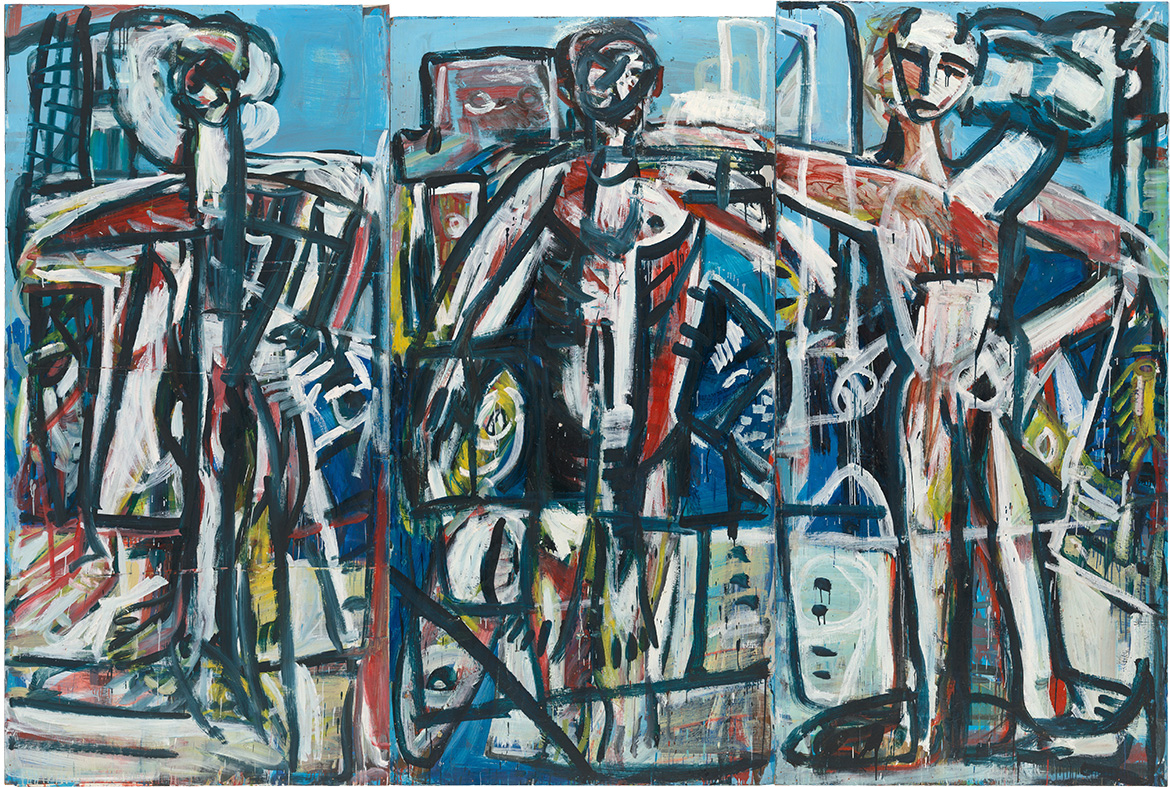
Before he set out to become an artist, studying privately under painter Roy Churcher and then attending art schools in both Brisbane and Sydney, Furlonger toiled in his uncle’s Samford Valley market garden. As a young man, he also worked as a deckhand on fishing boats out of Darwin and along the Queensland coast on his cousin’s trawler — the inspiration for his immense triptych Fishermen 1985 (illustrated). The land and the sea taught him the value and dignity of hard work and gave him the heightened acuity that comes with the practised repetition of any task, which would later manifest itself in Furlonger’s lifelong daily practice of drawing. Perhaps the legacy of endless days spent among sun-drenched rows of vegetables, or on a constantly rolling trawler deck, is the artist’s direct and unpretentious outlook on the complex interconnectedness of the human and natural worlds.
Joe Furlonger ‘Bathers’
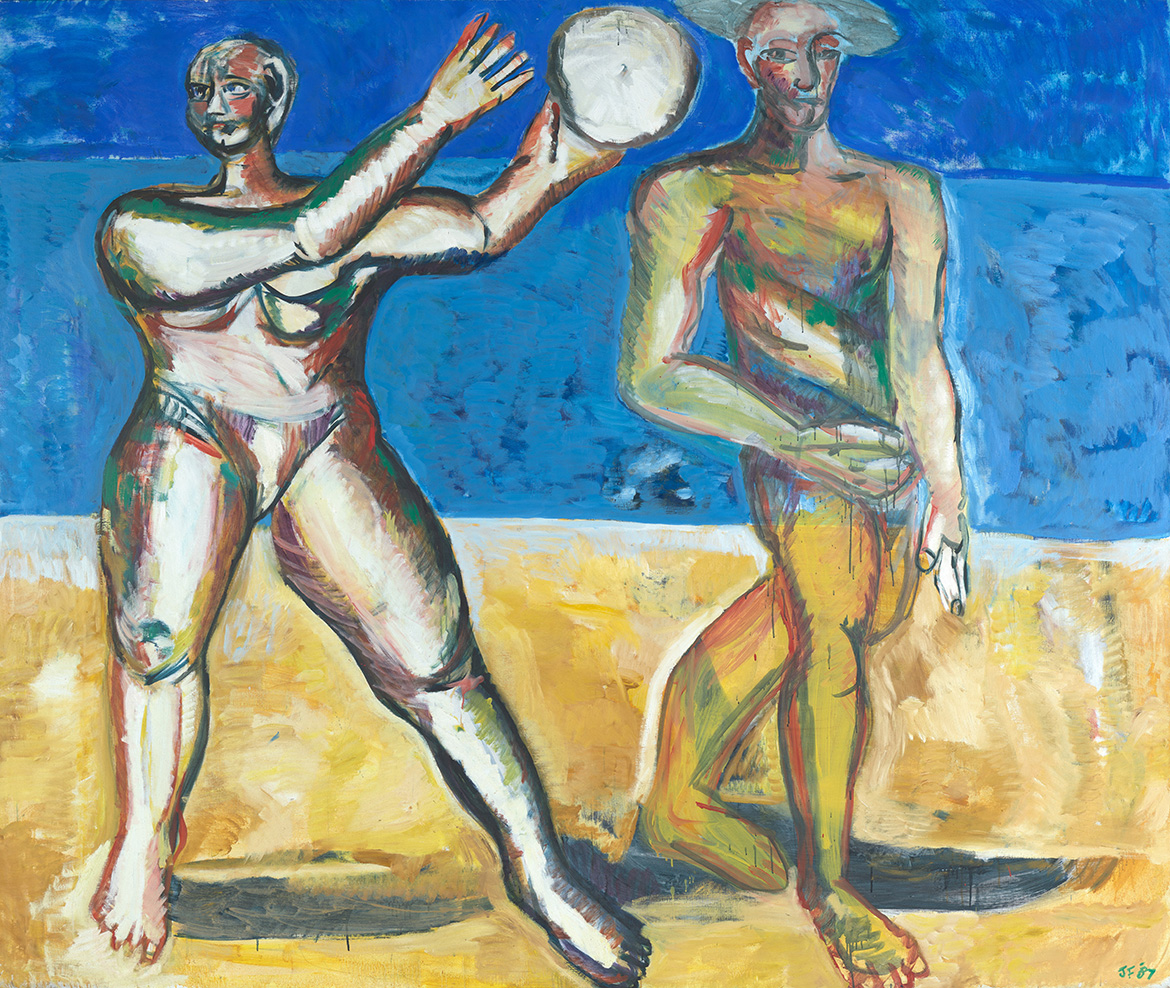
As QAGOMA Director Chris Saines notes, ‘reference is often made to Furlonger’s early debt to figurative works by European Modernists like Paul Cézanne and Pablo Picasso’, but his paintings also disclose a deep interest in the classical tradition and an instinct to draw from the Renaissance. Furlonger’s Bathers 1987 (illustrated) catapulted him to national prominence when it won the prestigious Moët & Chandon Fellowship in 1988. His colossal, black-outlined bathers throwing a ball on the beach, posed as if to catch the rising sun, press against the picture plane in call-and-response to Picasso’s surrealist bathers of the late 1920s. If Picasso was revivifying and modernising Cézanne’s approach to groups of bathers as a traditional subject — ecstatic joie de vivre set against the solemn grand manner — then Furlonger’s bathers step confidently out onto a Gold Coast beach. Vigorous, youthful and self-possessed, they arrive off a path that might reach back to Antiquity. His focus on the figure is not a profound meditation on the human condition but a celebration of its strength, freedom and physicality, elevated into an unyielding Australian light.
Joe Furlonger ‘Mother and child (after Bellini)’

The Moët & Chandon fellowship came with a glorious residency based at Moët’s vineyards it Épernay, north-east of Paris, which allowed Furlonger to maintain his connection to the countryside while traversing Europe’s cultural capitals. This experience simultaneously deepened his knowledge of the grand narratives of Western art and crystallised the development of his own artistic trajectory. He looked to art history to find his artistic bearings, while unswervingly locating his voice in the world around him. Illustrative of this shift are works like Mother and child (after Bellini) 1989 (illustrated), following the exemplar of the Venetian painter Giovanni Bellini. They are personal — he was then a first-time father to a newborn son — but also dignified and solemn. These works are driven not by religiosity but by a universal desire to comprehend our love for new life and our grief at its passing.
Joe Furlonger ‘Wilkie Creek in flood’
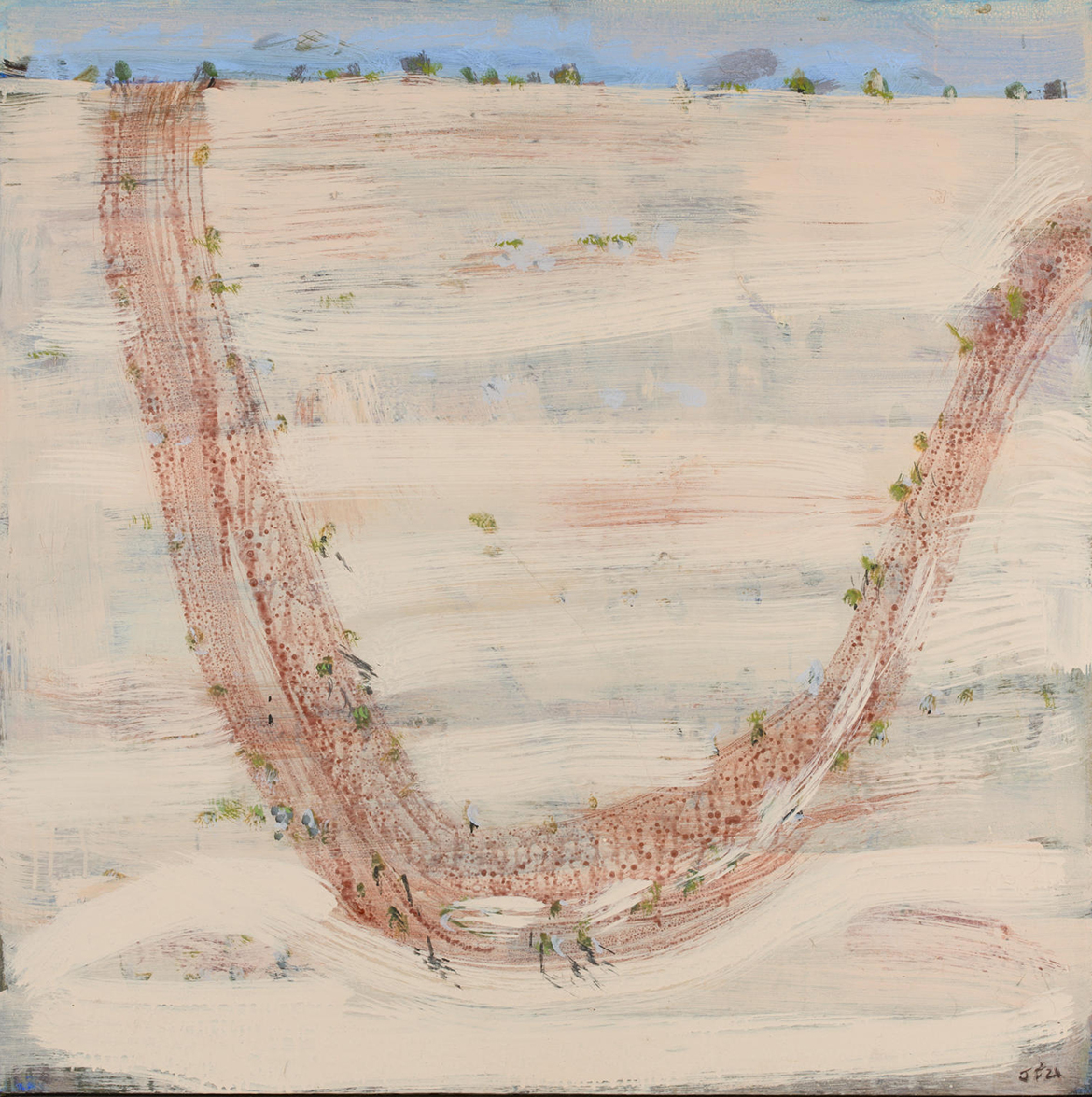
Joe Furlonger ‘Wilkie Creek, evening’

Described by exhibition curator Michael Hawker as ‘a restlessly creative artist, driven to evoke time and place’, over the course of his career, Joe Furlonger has taken on a variety of subjects, from the liveliness of the circus, the beach and even the Gold Coast Indy, to the impressionistic Australian land and seascapes of his later years. This mutable talent sees each medium of his choice — drawing and painting, etching and woodcut, sculpture and ceramics — forming part of an organic whole. Anchored by a keen engagement with his world of experiences, writes Hawker, ‘Furlonger’s life is his art and his art, his life’. Initially inspired to portray the elements of his youth, his chosen subjects — the bush, the beach and the sea — launched him as an artist and continue to move him today.
This article is an edited excerpt of texts by QAGOMA Director Chris Saines, Assistant Director Simon Wright (Learning and Public Engagement), exhibition curator Michael Hawker (Curator, Australian Art to 1980), Gillian Osmond (Conservator, Painting) and Ruby Awburn (Assistant Conservator, Painting), drawn from the QAGOMA exhibition publication Joe Furlonger: Horizons, published with the generous support of the Gordon Darling Foundation.
Endnote
1 See the photographic works Ian Fairweather (from ‘Hut’ series) 1966 by Robert Walker; Ian Fairweather at work 1969 by David Beal; and Interior of Fairweather’s hut… c.1961 by Clark Massie, in Claire Roberts, Fairweather and China, Miegunyah Press, Melbourne University Publishing, Victoria, 2021, pp.220–21.
Watch: Joe Furlonger’s story
The limited-edition hardcover publication ‘Joe Furlonger: Horizons’ is available for purchase from the QAGOMA Store and online.
‘Joe Furlonger: Horizons’ / Gallery 14 and the Kenneth and Yasuko Myer Gallery (Gallery 3), Queensland Art Gallery / 27 August 2022 to 29 January 2023.
#QAGOMA
